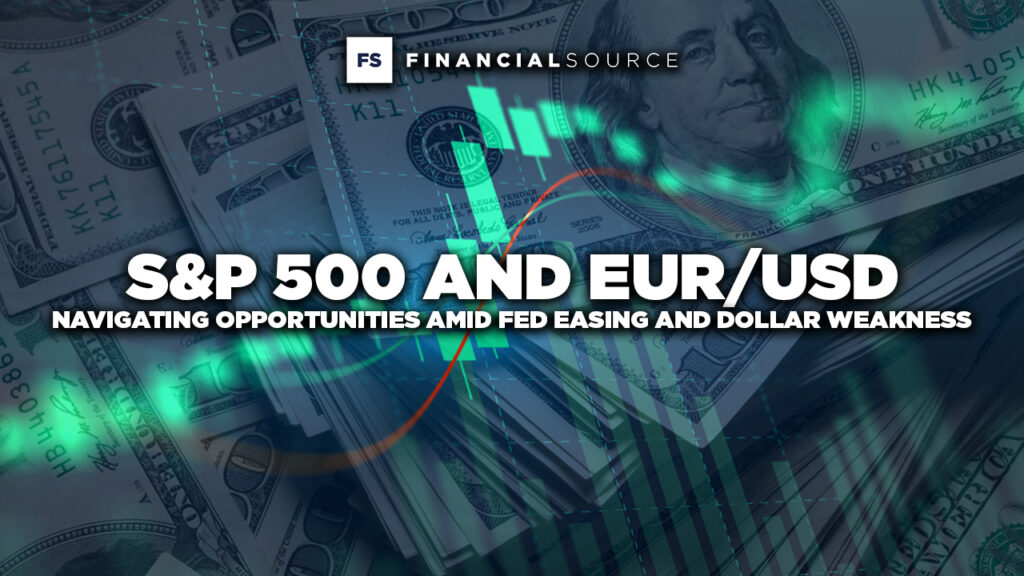S&P 500 and EUR/USD: Navigating Opportunities Amid Fed Easing and Dollar Weakness

The Federal Reserve’s recent dovish stance, signaling a 50bps rate cut, has reshaped market dynamics across asset classes. With lower dot plot projections, weaker inflation, and rising unemployment expectations, both the S&P 500 and EUR/USD are positioned for potential upside. However, traders must balance the opportunities with potential risks as markets digest these developments.
On the equity side, the S&P 500 is benefiting from a risk-on environment driven by Fed signals of further rate cuts. Historically, markets have rallied ahead of monetary easing, with equities climbing as investors anticipate cheaper borrowing costs and increased liquidity. For traders, dip-buying remains the preferred strategy. Key support levels in the S&P 500 should offer good entry points for those looking to ride the Fed’s dovish momentum. Yet, as always, caution is warranted. Sudden changes in macro data or unexpected Fed commentary could spark volatility, creating the potential for sharper pullbacks. Remaining nimble and timing entries at pullbacks will help mitigate this risk.
Turning to EUR/USD, the pair is also showing a strong buy bias in the wake of the Fed meeting. With the yield spread between German bunds and US treasuries widening, the euro is set to strengthen further against the dollar. Traders should keep a close eye on dips near 1.103, as these present solid buying opportunities with a potential target at 1.1240. As long as the dollar remains under pressure, the euro’s upward momentum is expected to persist. However, risks include any shifts in European Central Bank (ECB) policy or unforeseen global events that could suddenly favor the dollar.
In both markets, the primary driver of bullish momentum is the Federal Reserve’s continued easing policy. For the S&P 500, lower rates will likely bolster corporate earnings and drive equity markets higher, while for EUR/USD, the weaker dollar makes the euro an attractive buy. That said, traders must remain vigilant of any unexpected changes in central bank communication or macroeconomic data that could disrupt these trends. The key to navigating these opportunities lies in timing—waiting for pullbacks in both assets to enter long positions, while keeping stop losses tight to protect against sudden reversals.
In conclusion, while the outlook for both the S&P 500 and EUR/USD appears bullish following the dovish Fed meeting, traders must manage risks carefully. The potential for volatility remains high, but with the right strategy—buying the dips and watching key support levels—there are promising opportunities to capitalize on the current market environment.